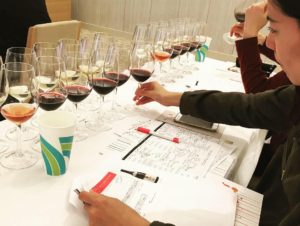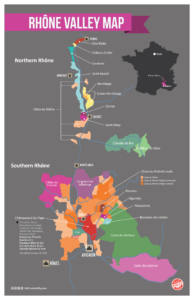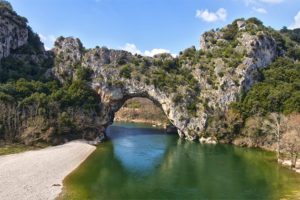Happo-en Seminar: Rhône wines and Côtes du Rhône2018/10/18


The vineyards of the Rhone Valley, which forms a corridor between the Mediterranean and Northern Europe, have been producing wines for at least 2000 years.
In the 14th century, the papacy moved from Rome to Avignon and the popes, great lovers of the local wines, planted extensive vineyards around the city and participated to grow the popularity of the wines.


Rhônes wines are the second vineyard AOC in France.
The wine indutry is the most important sources of employment of the area. The offer in diversity is exceptional in France with for the most important red wines 80%.
10% in Biodynamie.
250 km from north to south, 250 communes (local authority areas, often villages)… The vineyards of the Rhone Valley are a world apart, a shifting landscape which winds and unwinds around a fluid axis: the Rhone, king of rivers, carrying silt and a sense of history. The Rhone is the linking factor, holding together these contrasting landscapes.

Rhône Valley appelations:
On top of the pyramid: 17 Crus and 2 types of sweet wines
Then: 21 Côtes du Rhône Villages
Followed by AOC Côtes du Rhône Villages and AOC Côtes du Rhône Regionale
A pyramid in constant evolution
These represent 75%, 25% are represented by satellite appelation as Costières de Nîmes, Lubéron, Ventoux,etc..
North and South-
The north of the appellation is mainly a specialist of “crus” reds and whites as Saint Joseph or Condrieu, Hermitage,etc..
The south is more rich in term of appelations than the north.
The “crus” are in constant evolution-
While there is a great number of old vines new plantation are also important. It allows an evolution of the appelations. For exemple Cairanne AOC became a “cru” in 2016.
3000 ha are now in a process of renewal and 619 ha of new plantation were planted in 2016.
2 types of climates:
-The south has a mediterranean climate: warm/few rain/Mistral(south wind)
-The north has a continental climate: less hot/more rain/but good level of sunlight through the year/wind(Guise)
These two types of wind help to keep the vines dry and allow winemakers to adopt organic agriculture.
2 types of landscapes:
-south: wide plains/flat landscape/”guarrigues”/olive trees
-north: more abrupt/presence of many vineyards in terraces
There is a significant difference between both
Soils:
north: clay, giving powerful aromas and tannins to the wines and granit, specific to the north, gives delicacy and acidity to the wines
south: clay/pebbles. Clay gives the wines their full-body characteristic and their softness. Sands give delicacy.
Grapes varieties:
Rhone wines derive their style, richness and originality from the diversity of the region’s grape varieties.
28 grapes varieties.
Particularity of Rhône wines: many blended wines
4 main red grape varieties:
-red Grenache, ample/generous/heady
-Cinsault, light/delicate
-Syrah, king of the North, red/black fruits/violet aromas, aromatic/delicate
-Mourvèdre, powerful, structured
GSM= grenache/syrah/mourvèdre, the most used blend of wines in Rhône
4 main white grapes varieties:
-white Grenache, full and plump
-Viognier (Condrieu), fragant and subtle
-Roussane, delicate, fineness
-Marsanne powerful and vigorous
In brief: North= mono-grapes wines, granitic soil, structured wines with minerality
South= blended wines, diversity of the soils more important and wines more powerful and generous than the North.

















